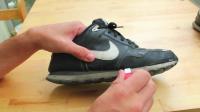Pompeii and the great volcanic eruption of Mount Vesuvius
The eruption of Mount Vesuvius in 79 AD was devastating. Two eruptions abruptly and permanently ended life in the Roman cities of Pompeii and Herculaneum. But why is the tragedy a stroke of luck for archaeologists and what exactly happened in the year 79 AD?
Pompeii: a snapshot of everyday Roman life
The volcanic eruption near Naples preserved everyday Roman life in Pompeii and Herculaneum for posterity like a chronologically unadulterated snapshot.In ancient times, Pompeii was considered a prosperous city. It is located on a small plateau about ten kilometers south of Mount Vesuvius and offered residents a charming view of the Gulf of Naples. At the gates of the city walls, where the river Sarno flows into the sea, a busy port had developed, from which ships regularly sailed Europe, North Africa and the Middle East. Papyrus, spices, dried fruit and ceramics were exchanged for local wine and grain.
The streets of the 60 hectare city of Pompeii formed the typical ancient grid. The entire city was surrounded by a wall with gates and watchtowers. A theater and the Stabian baths served to entertain the wealthy citizens. A Roman magnificent hall was the stock exchange and court of law. Not far from there was the forum with the Jupiter temple. A swimming pool in a sports facility offered the athletes a chance to cool off.
A volcanic eruption can have devastating effects, not only for climate change but...
The great eruption of Mount Vesuvius
But all this happened with the eruption of Mount Vesuvius in 79 AD Story. Preserved finds of food that could only be made or harvested in the fall indicate that the outbreak started a few weeks after March 24. had to have taken place in August. This date was mentioned by Pliny the Younger, who wrote a letter to the historian Tacitus after the catastrophe has sent and the outbreak that his uncle Pliny the Elder witnessed as an eyewitness in great detail described.
Despite numerous warning signs, the outbreak came as a surprise to many. Black smoke drifted toward the city, the sky darkened, and ash and pumice fell. Panic broke out, some fled, others took shelter in their homes. About a third of the population died in this eruption. People suffocated or were killed by falling rocks. The second eruption the next day was even more devastating. Masses of lava poured into the houses and there was little escape for those who stayed behind.
About 2,000 of the 20,000 inhabitants were later found. The scientists therefore assume that many people escaped and were therefore able to survive. But the city was buried and was forgotten for centuries.
The beginning of the excavations of Pompeii
Knowledge of the cities of Pompeii and Herculaneum was lost after the catastrophe. It was only the descriptions by the archaeologist Johann Joachim Winckelmann (1717 - 1768) that sparked off a veritable boom in antiquity. Those who were self-respecting and able to finance it went to Pompeii to see the early excavations.
At that time, it was more randomly digging for individual finds than systematic digging. If a spot was promising, holes were dug and then horizontal shafts were driven into the lava rock. A lot was destroyed in the process and the objects can rarely be assigned to their places of discovery later. What was considered valuable in a collection was taken away, others were destroyed.
The current archaeological site
in the 19th In the 19th century, the Italian monarch Vittorio Emmanuele II. as the first for a systematic research. So the archaeologist Fiorelli began to bring order to the previously chaotic excavation attempts. He removed the rock horizontally, layer by layer, and was able to bring entire houses to light and reconstruct a plan of the entire city.
He kept a complete documentation of the found objects. Fiorelli left most of the finds where they were and tried to protect the houses from the weather and dirt. Through his sense of order and careful excavations, he left a unique testimony of ancient urban culture to posterity. Because the volcano's ash preserved the city so well over the centuries, Pompeii has preserved much more than other ancient cities.
So also human and animal skeletons that were buried under the meters high volcanic material. Giuseppe Fiorelli began to fill in the voids left by the bones in the cooled lava with plaster. After the volcanic rock was cut off, sculptures were created that capture the agony of the inhabitants of Pompeii to this day.
After the excavations in Pompeii used to be quite an exclusive affair, Giuseppe Fiorelli opened parts of the excavations to the general public. It was important to him that everyone had access to Roman antiquity. From then on, an ever-increasing stream of tourists crowded the ancient streets. Pollution, arbitrariness and the abrasion of thousands of backpacks irretrievably destroyed numerous works of art and Pompeii is disappearing more and more.
So if you do visit the ancient city itself, be careful and considerate and keep reminding yourself of the historical significance of the site to do your part in preserving it to contribute.


